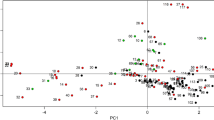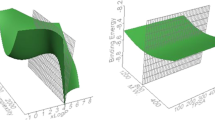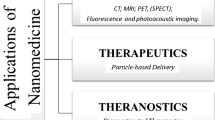Abstract
Conventional drugs have been facing various drug delivery obstacles, including first-pass metabolism for oral medications, drug degradation by cellular enzymes, off-target effects, and cytotoxicity of healthy cells. Nanoparticles (NP) application in drug delivery can compensate for these drawbacks to a great extent. NPs can be fabricated using different materials and structures to achieve desired therapeutic effects. For each type of NP material, its physicochemical properties determine compatibility with specific drugs and other supplemental compositions. The optimized material selection becomes prominent in NP development to improve NP performances. Due to the nature of NP fabrication, the process is long and expensive. To accelerate NP composition optimization, machine learning (ML) techniques are among the most promising methods for efficient data predictions and optimizations.
As a proof-of concept, we created Gaussian Process (GP) models to make predictions for drug encapsulation efficiency (EE%) and therapeutic efficacy of 32 poly (lactic-co-glycolic acid) (PLGA) NPs that are formed with materials with different physicochemical properties. Two model drugs, doxorubicin (DOX) and docetaxel (DTX) were loaded separately. The IC50 values for the various NPs formulations were evaluated using the OVCAR3 epithelial ovarian cancer cell line. EE% GP model has the highest prediction accuracy with the lowest normalized root-mean-squared-error (RMSE) of 0.187. The DOX and DTX IC50 GP models have normalized RMSEs of 0.296 and 0.206, respectively, which are higher than that of the EE% GP model.
Graphical Abstract











Similar content being viewed by others
References
Patra JK, Das G, Fraceto LF, Campos EVR, Rodriguez-Torres MDP, Acosta-Torres LS, et al. Nano based drug delivery systems: recent developments and future prospects. J Nanobiotechnology. 2018;16:71.
Mitchell MJ, Billingsley MM, Haley RM, Wechsler ME, Peppas NA, Langer R. Engineering precision nanoparticles for drug delivery. Nat Rev Drug Discov. 2021;20:101–24.
Jia Y, Jiang Y, He Y, Zhang W, Zou J, Magar KT, et al. Approved nanomedicine against diseases. Pharmaceutics. 2023;15:774.
Milligan JJ, Saha S. A nanoparticle’s journey to the tumor: strategies to overcome first-pass metabolism and their limitations. Cancers (Basel). 2022;14:1741.
Survival statistics for ovarian cancer - Canadian Cancer Society. www.cancer.ca Available at: https://www.cancer.ca/en/cancer-information/cancer-type/ovarian/prognosis-and-survival/survival-statistics/?region=on. (Accessed: 16th May 2021).
Penn CA, Alvarez RD. Current issues in the management of patients with newly diagnosed advanced-stage high-grade serous carcinoma of the ovary. JCO Oncology Practice. 2023;19:116–22.
Thorn CF, Oshiro C, Marsh S, Hernandez-Boussard T, McLeod H, Klein TE, et al. Doxorubicin pathways: pharmacodynamics and adverse effects. Pharmacogenet Genomics. 2011;21:440–6.
Katsumata N. Docetaxel: an alternative taxane in ovarian cancer. Br J Cancer. 2003;89:S9-15.
Kaur R, Kaur G, Gill RK, Soni R, Bariwal J. Recent developments in tubulin polymerization inhibitors: An overview. Eur J Med Chem. 2014;87:89–124.
Sarker IH. AI-Based Modeling: Techniques, Applications and research issues towards automation, intelligent and smart systems. SN Comput Sci. 2022;3:158.
Pedregosa F, Varoquaux G, Gramfort A, Michel V, Thirion B, Grisel O, et al. Scikit-learn: machine learning in python. J Mach Learn Res. 2011;12:2825–30.
Daina A, Michielin O, Zoete V. SwissADME: a free web tool to evaluate pharmacokinetics, drug-likeness and medicinal chemistry friendliness of small molecules. Sci Rep. 2017;7:42717.
Hu H, Zhao K, Fernandes N, Boufflet PH, Bannock J, Yu L, et al. Entanglements in marginal solutions: a means of tuning pre-aggregation of conjugated polymers with positive implications for charge transport. J Mater Chem C. 2015;3:7394–404.
Presmanes C, de Miguel L, Espada R, Álvarez C, Morales E, Torrado JJ. Effect of PLGA hydrophilia on the drug release and the hypoglucemic activity of different insulin-loaded PLGA microspheres. J Microencapsul. 2011;28:791–8.
Fu X, Ping Q, Gao Y. Effects of formulation factors on encapsulation efficiency and release behaviour in vitro of huperzine A-PLGA microspheres. J Microencapsul. 2005;22:705–14.
Song X, Zhao Y, Hou S, Xu F, Zhao R, He J, et al. Dual agents loaded PLGA nanoparticles: Systematic study of particle size and drug entrapment efficiency. Eur J Pharm Biopharm. 2008;69:445–53.
Song X, Zhao Y, Wu W, Bi Y, Cai Z, Chen Q, et al. PLGA nanoparticles simultaneously loaded with vincristine sulfate and verapamil hydrochloride: systematic study of particle size and drug entrapment efficiency. Int J Pharm. 2008;350:320–9.
Ravi S, Peh K, Darwis Y, Murthy BK, Singh TRR, Mallikarjun C. Development and characterization of polymeric microspheres for controlled release protein loaded drug delivery system. Indian J Pharm Sci. 2008;70:303.
Kohno M, Andhariya JV, Wan B, Bao Q, Rothstein S, Hezel M, et al. The effect of PLGA molecular weight differences on risperidone release from microspheres. Int J Pharm. 2020;582:119339.
Fonseca C, Simões S, Gaspar R. Paclitaxel-loaded PLGA nanoparticles: preparation, physicochemical characterization and in vitro anti-tumoral activity. J Control Release. 2002;83:273–86.
Shah S, Chandra A, Kaur A, Sabnis N, Lacko A, Gryczynski Z, et al. Fluorescence properties of doxorubicin in PBS buffer and PVA films. J Photochem Photobiol, B. 2017;170:65–9.
Alexander DLJ, Tropsha A, Winkler DA. Beware of R2: simple, unambiguous assessment of the prediction accuracy of QSAR and QSPR models. J Chem Inf Model. 2015;55:1316–22.
Acknowledgements
We would like to acknowledge Dr. Yannick Traore and Dr. Chen Sun for providing valuable advice in wet lab experiments. We would also like to acknowledge the School of Pharmacy, University of Waterloo, Ontario, Canada, for Science Graduate Award, Graduate Research Scholarship, Graduate Studies Conference Assistantship, and Christine & David Edwards Graduate Studies Travel Award.
Author information
Authors and Affiliations
Contributions
All authors contributed to the study conception and design. Wet-lab data collection and all data analysis were performed by Sihan Dong. The vast majority of machine learning programming was performed by Haolin Yu, while a small portion was performed by Sihan Dong. The first draft of the manuscript was written by Sihan Dong. Dr. Emmanuel A. Ho and Dr. Pascal Poupart reviewed and edited the manuscript. All authors read and approved the final manuscript.
Corresponding author
Ethics declarations
Ethics approval
Not applicable.
Consent to participate
Not applicable.
Consent to publication
All the authors approve the publication.
Competing interests
The authors declare no competing interests.
Additional information
Publisher's Note
Springer Nature remains neutral with regard to jurisdictional claims in published maps and institutional affiliations.
Supplementary Information
Below is the link to the electronic supplementary material.
Rights and permissions
Springer Nature or its licensor (e.g. a society or other partner) holds exclusive rights to this article under a publishing agreement with the author(s) or other rightsholder(s); author self-archiving of the accepted manuscript version of this article is solely governed by the terms of such publishing agreement and applicable law.
About this article
Cite this article
Dong, S., Yu, H., Poupart, P. et al. Gaussian processes modeling for the prediction of polymeric nanoparticle formulation design to enhance encapsulation efficiency and therapeutic efficacy. Drug Deliv. and Transl. Res. (2024). https://doi.org/10.1007/s13346-024-01625-7
Accepted:
Published:
DOI: https://doi.org/10.1007/s13346-024-01625-7




